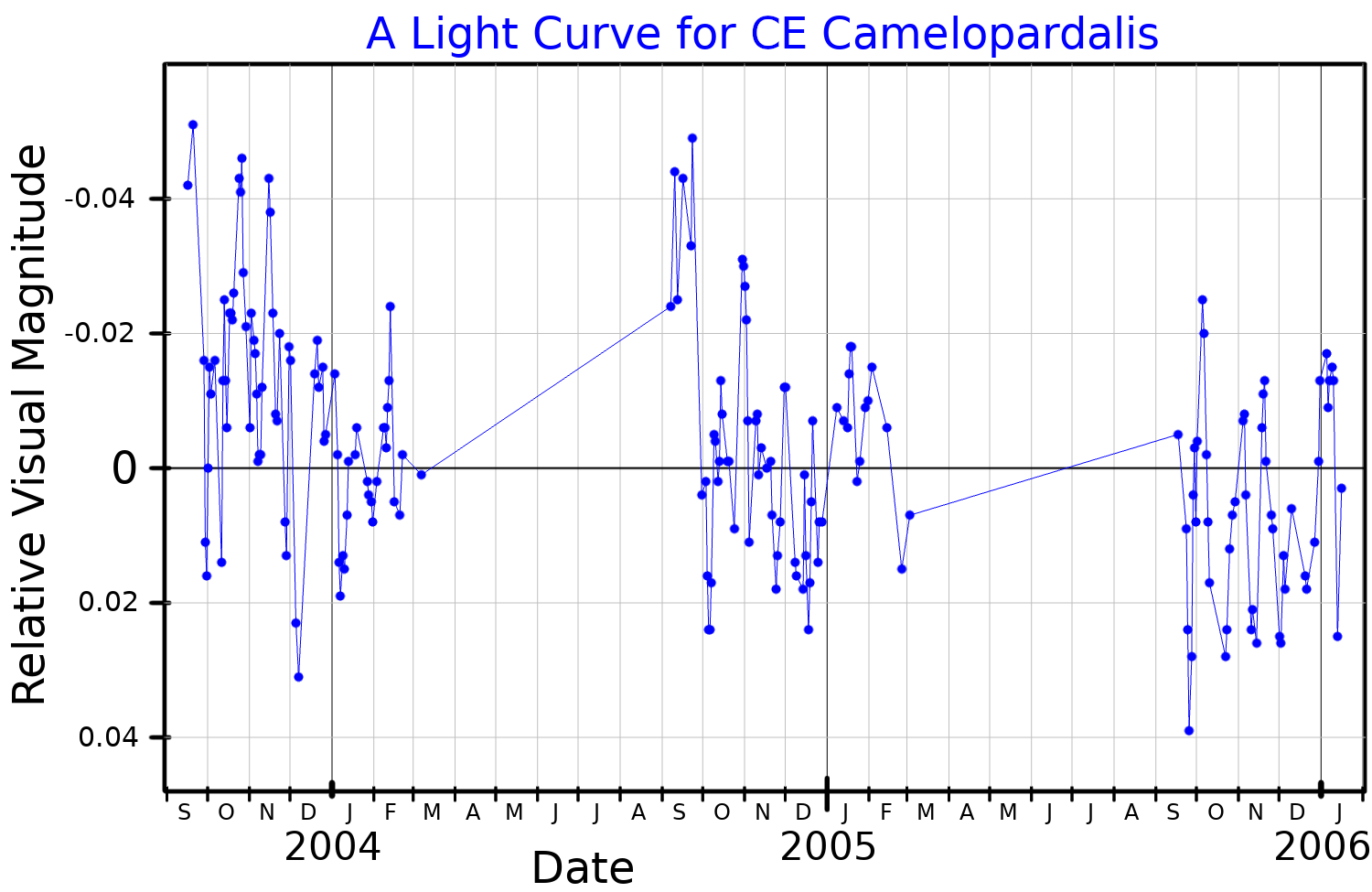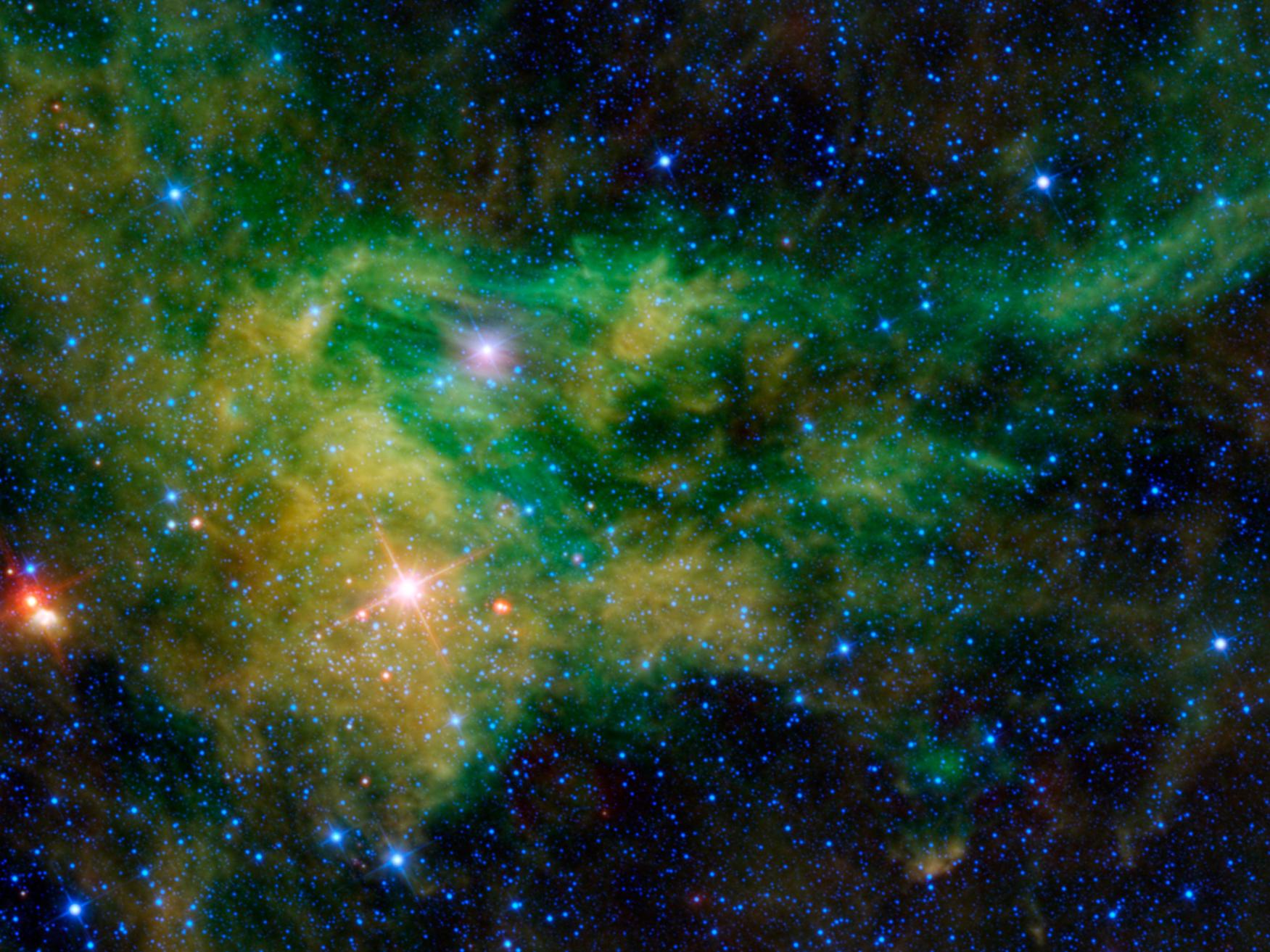HD 21389 on:
[Wikipedia]
[Google]
[Amazon]
HD 21389 is a  Since 1943, the
Since 1943, the  CE Cam is embedded in a large dusty molecular cloud, part of which it illuminates as a reflection nebula (vdB15 or BFS 29). This is a region of ongoing star formation with stars aged from one to a hundred million years old. CE Cam itself is thought to be around 11 million years old, long enough to have exhausted its core hydrogen and evolved away from the main sequence into a supergiant.
CE Cam is embedded in a large dusty molecular cloud, part of which it illuminates as a reflection nebula (vdB15 or BFS 29). This is a region of ongoing star formation with stars aged from one to a hundred million years old. CE Cam itself is thought to be around 11 million years old, long enough to have exhausted its core hydrogen and evolved away from the main sequence into a supergiant.
Image CE Camelopardalis
{{DEFAULTSORT:HD 21389 Camelopardalis (constellation) Alpha Cygni variables 021389 016281 A-type supergiants Camelopardalis, CE
supergiant
Supergiants are among the most massive and most luminous stars. Supergiant stars occupy the top region of the Hertzsprung–Russell diagram with absolute visual magnitudes between about −3 and −8. The temperature range of supergiant stars spa ...
variable star
A variable star is a star whose brightness as seen from Earth (its apparent magnitude) changes with time. This variation may be caused by a change in emitted light or by something partly blocking the light, so variable stars are classified as ...
in reflection nebula Reflection or reflexion may refer to:
Science and technology
* Reflection (physics), a common wave phenomenon
** Specular reflection, reflection from a smooth surface
*** Mirror image, a reflection in a mirror or in water
** Signal reflection, in s ...
VdB 15, in the constellation Camelopardalis
Camelopardalis is a large but faint constellation of the northern sky representing a giraffe. The constellation was introduced in 1612 or 1613 by Petrus Plancius. Some older astronomy books give Camelopardalus or Camelopardus as alternative for ...
. It has the variable star designation
In astronomy, a variable star designation is a unique identifier given to variable stars. It uses a variation on the Bayer designation format, with an identifying label (as described below) preceding the Latin genitive of the name of the constell ...
CE Camelopardalis, abbreviated CE Cam. This object is part of the Camelopardalis OB1 association. The near-identical member CS Camelopardalis
CS Camelopardalis (CS Cam; HD 21291) is a binary star in reflection nebula VdB 14, in the constellation Camelopardalis.
It forms a group of stars known as the Camelopardalis R1 association, part of the Cam OB1 association. Th ...
lies half a degree to the north.
 Since 1943, the
Since 1943, the spectrum
A spectrum (plural ''spectra'' or ''spectrums'') is a condition that is not limited to a specific set of values but can vary, without gaps, across a continuum. The word was first used scientifically in optics to describe the rainbow of colors i ...
of CE Cam has served as one of the stable anchor points by which other stars are classified.
CE Camelopardalis is some 19 times as massive as the Sun and 55,000 timers as luminous. Hohle and colleagues, using the parallax, extinction and analysis of spectrum, came up with a mass 14.95 ± 0.41 times that and luminosity 62,679 times that of the Sun.
 CE Cam is embedded in a large dusty molecular cloud, part of which it illuminates as a reflection nebula (vdB15 or BFS 29). This is a region of ongoing star formation with stars aged from one to a hundred million years old. CE Cam itself is thought to be around 11 million years old, long enough to have exhausted its core hydrogen and evolved away from the main sequence into a supergiant.
CE Cam is embedded in a large dusty molecular cloud, part of which it illuminates as a reflection nebula (vdB15 or BFS 29). This is a region of ongoing star formation with stars aged from one to a hundred million years old. CE Cam itself is thought to be around 11 million years old, long enough to have exhausted its core hydrogen and evolved away from the main sequence into a supergiant.
References
External links
Image CE Camelopardalis
{{DEFAULTSORT:HD 21389 Camelopardalis (constellation) Alpha Cygni variables 021389 016281 A-type supergiants Camelopardalis, CE
1040
Year 1040 ( MXL) was a leap year starting on Tuesday (link will display the full calendar) of the Julian calendar.
Events
By place Europe
* Spring – Nikephoros Dokeianos, Byzantine governor of the Catepanate of Italy, is murdered ...
Durchmusterung objects